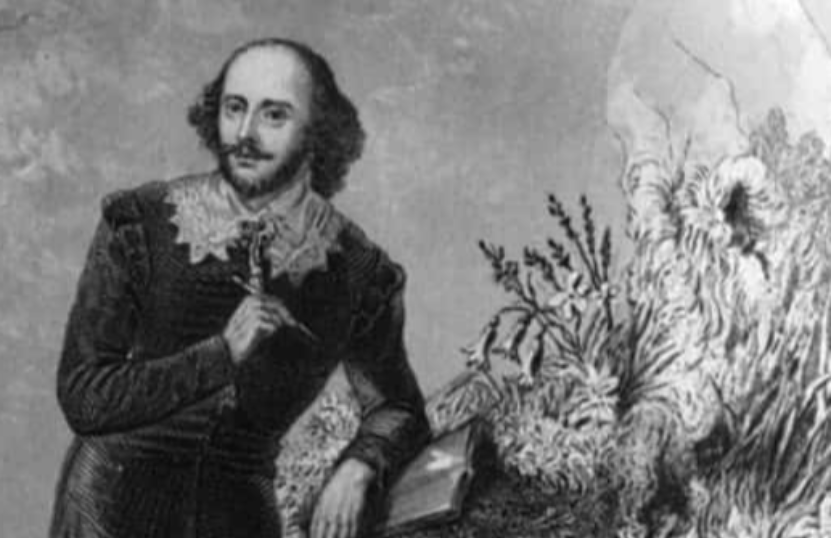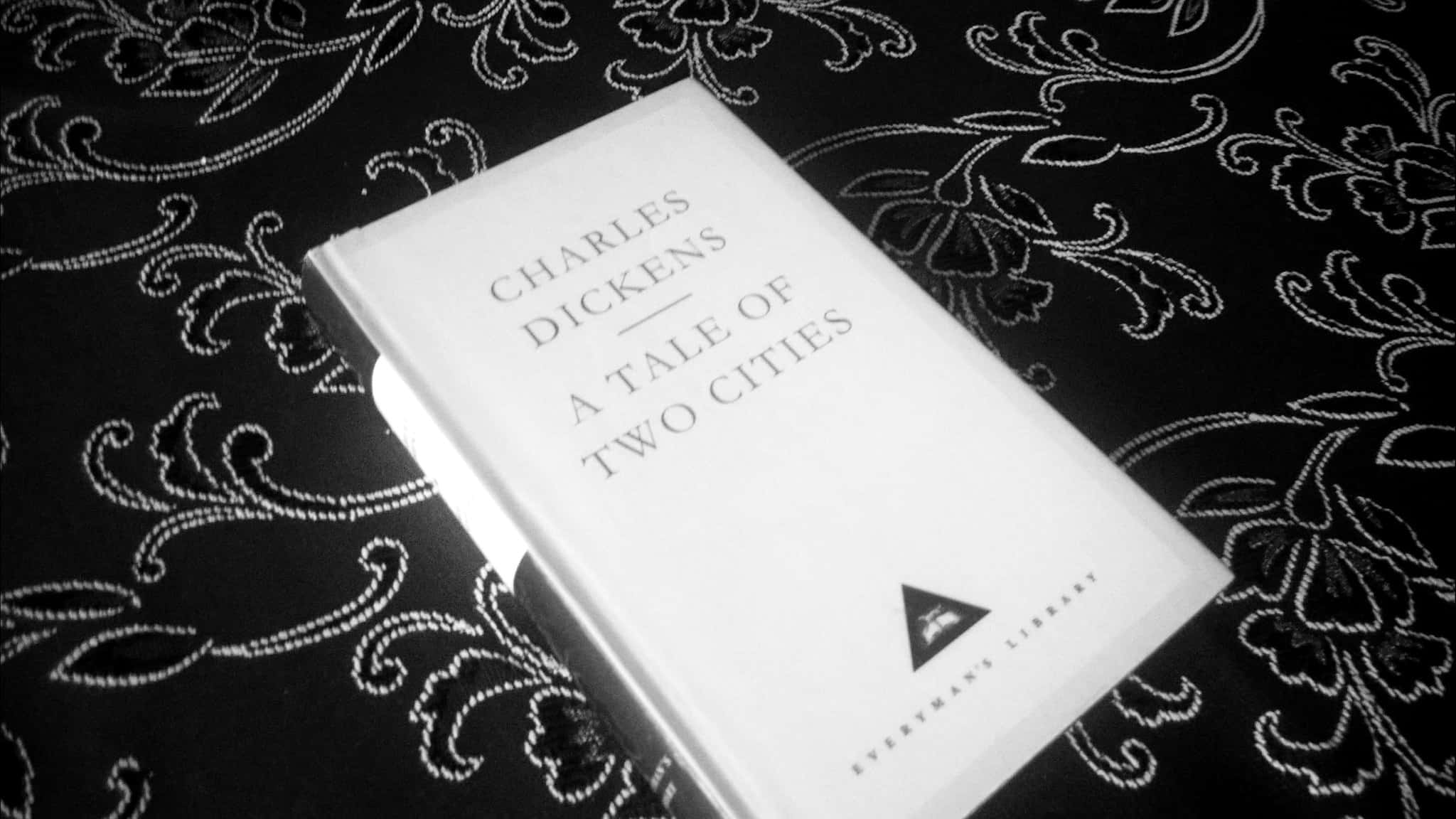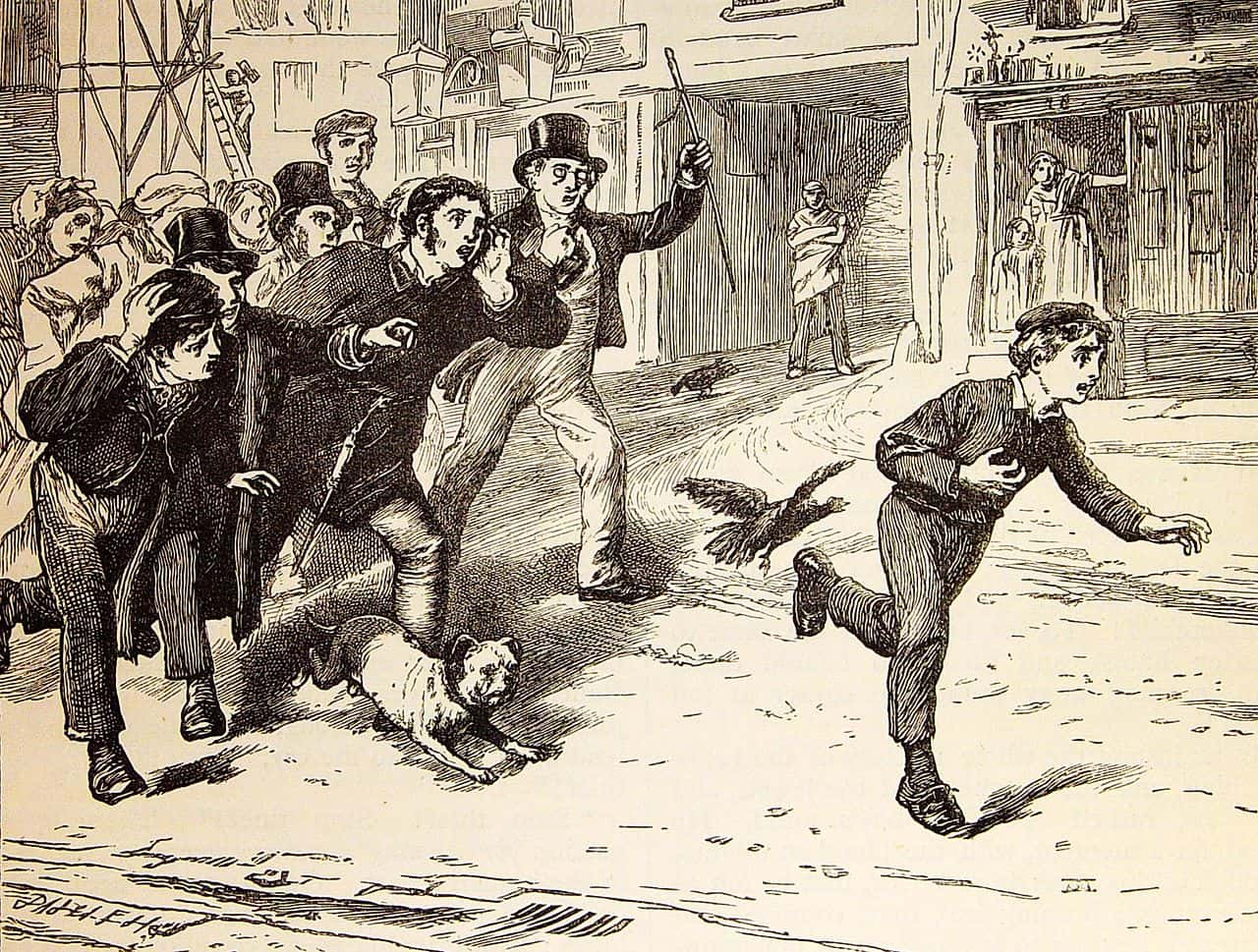“I know enough of the world now to have almost lost the capacity of being much surprised by anything".—Charles Dickens
There’s a lot to be said about Charles Dickens. He created one of the most iconic Christmas stories of all time and wrote masterpiece after masterpiece after masterpiece. He dominated the Victorian Age and continues to be incredibly successful to this day. Maybe we haven't all gotten through Great Expectations or David Copperfield, but we do all know Oliver Twist and Ebenezer Scrooge. Though he lived in a completely different world than the one of today, Dickens' works have truly stood the test of time. But what made this man the way he was? Was he as beloved as his literature? What kind of eccentricities did he have? Why were his books so long? Read these 42 facts and find out more about this legendary English writer.
1. Stay Tuned For The Next Part!
While Charles Dickens is famous for his many books, none of them were actually published as books originally; rather, they were all released as serials. This meant they were broken up into parts, with each part published one after the other in a journal or newspaper of the time. For example, Great Expectations was released between December 1860 and August 1861 in a journal that Dickens owned called All the Year Round. They were later assembled into book form in response to popular demand. So basically, it was like a TV show being released one episode per week, then later the whole season gets put on Netflix for people to binge all at once.

2. A Mix Between Oliver Twist And Tiny Tim
When Dickens was twelve years old, his father, a clerk in the Navy Pay Office named John Dickens, found himself with such debt to pay off that he was actually forced into debtor’s correctional facility by the men to whom he owed money. Charles’ mother and his youngest siblings moved into the facility with John, leaving Charles to struggle in poverty with family friends.
3. Education Wasn’t My Thing
When Dickens was 15, he had to drop out of school to help support his family, taking the position of a law clerk. Given what a powerhouse writer he became during his lifetime, it’s remarkable to think that he was almost entirely self-taught from 15 onwards.
4. Families To Feed
One thing that Dickens had in common with his wife was that they both came from big families. Dickens came from a family with eight children, while Catherine Dickens (nee Hogarth) was the eldest of ten siblings. She and Dickens would go on to have ten children of their own. No wonder Dickens wrote so much, that's a lot of mouths to feed!
5. Lesson For A Lifetime
One of Dickens’ very first jobs was pasting labels on pots of boot blacking in a factory by Charing Cross Station in London (maybe the most Dickensian job there ever was). The conditions were unbelievably harsh, and Dickens was only earning six shillings a week for his troubles. This brutal childhood would have a lasting effect on him, particularly his writing.
6. Nothing To See Here, Folks!
As if this wasn’t bad enough, the warehouse in which he worked was moved to Chandos Street, in the middle of the district called Covent Gardens. Dickens and the other working boys now worked in rooms with windows which allowed passersby to watch them labor on as if they were animals in a zoo. No wonder Dickens had such a chip on his shoulder when it came to poverty!
7. Meet Cute
Dickens met his future wife, Catherine Hogarth, when he worked as a young journalist for the Morning Chronicle, which was also where Catherine’s father worked as a writer and music critic. Catherine and Charles were married on the 2nd of April, 1836.
8. Early Bird
Dickens wrote his first published fictional piece when he was working as a reporter at the Morning Chronicle. The piece was called A Dinner at Poplar Walk, and he was only 21 when it was published.
9. Influential, But Not That Influential
Interestingly, his surname was not the inspiration for the expression “What the Dickens!” This expression was seen as a more polite version of “What the Devil?” and can be traced back to William Shakespeare’s Merry Wives of Windsor. Because, as we all know, everything comes from Shakespeare. But anyway, this is a list about Dickens, no the Immortal Bard, so we're moving on.
10. Move Over, Poe
During his lifetime, Dickens kept a raven for a pet, whom he named Grip. After Grip passed, Dickens had his former pet stuffed, presumably so he could put him on his bust of Pallas (you know, the one above his chamber door?) to keep hanging around croaking “Nevermore!”
11. Nowadays He Would Have Said “YOU CAN’T HANDLE THE TRUTH!”
The second part of A Tale of Two Cities is titled “The Golden Thread". This is partly because of Lucie Manette’s golden hair. Lucie is separated from her father for nearly her entire life; he only recognizes her because her golden hair is identical to a thread of gold hair left on his clothes all those years ago. This golden hair was referenced in a famous real-world law case called “Woolmington v. DPP". While delivering the judgment, Viscount Salkey famously declared that “one golden thread is always to be seen…” Given how focused A Tale of Two Cities is on the subject of justice, it was quite a fitting reference.
12. The Upper Echelon
Dickens is undeniably one of the most successful English novelists of all time. Since his emergence as a writer, his books have never gone out of print, and even legendary writers of later years have consistently named him as an inspiration. These include Fyodor Dostoyevsky, Jules Verne, Leo Tolstoy, and George Orwell. Even Oscar Wilde, while criticizing Dickens’ depiction of characters in his writing, had to admit that he admired Dickens’ talent for caricature.
13. Namesakes
One of Dickens’ contemporaries was a writer named Bulwer Lytton, known for starting one of his books with the infamous phrase “It was a dark and stormy night..". In fact, Lytton and Dickens were such close friends that Dickens named his son Edward Bulwer Lytton Dickens. Now that's close!
14. Overactive Imagination
Speaking of his kids’ names, if there was one thing that Dickens loved, it was coming up with nicknames (one name just wasn’t enough, it seems). He had several nicknames for himself, including "The Sparkler of Albion" and "Revolver" (which makes us wonder if he was a bored supervillain in his spare time). He also came up with nicknames for his children, such as "Skittles" and "Chickenstalker" (that last one needs an explanation there Chaz).
15. When Writers Go Wild
One person who found it in him to despise Dickens’ writing was the renowned English Romantic poet William Wordsworth, who was also Poet Laureate for a time. Wordsworth bragged about not having even given Dickens’ writing a chance, considering Dickens “very talkative” and “vulgar". Dickens didn’t hesitate to fire back, though, decrying Wordsworth as “a dreadful Old idiot". Meow!
16. Redeeming The Wretched Rich
When Dickens visited Manchester’s factories, he was reminded of all the pain their workers had to endure, as he once had. Dickens decided he should “strike a sledge hammer hit” in the name of the working poor. As he later confessed, he “wept and laughed, and wept again” while he wrote this powerful new book in 1843. That book was none other than A Christmas Carol.
17. Thanks, Mom
While Dickens was slaving away in the warehouse, his father’s mother lost her life and left him enough money to pay off his debts. However, his mother initially didn’t move to get her son out of the work which was getting the family something of an income. As Dickens later wrote: “I never afterwards forgot, I never shall forget, I never can forget, that my mother was warm for my being sent back." This understandably left Dickens a little sour towards his mother, and allegedly it even affected his view on women in general.
18. Vive La France
Dickens was known for being a real Francophile. He frequently visited France when he went on vacation. In 1846, he even delivered a speech in Paris where he described the French as “the first people in the universe". As admirable of a praise that is, Dickens should consider himself lucky that no Cro-Magnons or Neanderthals were around to be offended.
19. Giving Back
In keeping with his affinity for the afflicted, Dickens was persuaded by Angela Coutts, an heiress, to help develop a safe residence where fallen women (prostitutes) could learn how to read, write, and carry out more domestic duties to save them from a life in prostitution. Dickens became very involved, interviewing candidates in prisons or workhouses and setting house rules to be followed. Around 100 women graduated from this residence, which became known as Urania Cottage.
20. What’s Behind The Door?
Dickens’ house contained a door which had been built to look like an ordinary bookcase. Behind this disguised door was a secret room, presumably where a Victorian-age style Batman costume was kept, in case Dickens had to go fight one of his mortal enemies. What indication was there that the bookcase was not what it seemed, you ask? The books were all completely made up, with titles like Was Shakespeare's Mother Fat? and Hansard's Guide to Refreshing Sleep.
21. Have You Read My Wife’s Book?
Dickens wasn’t the only one in his family who was writing. His wife, Catherine, published a book in 1851 under the pseudonym "Lady Maria Clutterbuck" (seems like she shared her husband’s talent for making up names). Her book was focused on cookery, offering menu ideas, with some recipes thrown into the mix. It was titled What Shall we Have for Dinner? Satisfactorily Answered by Numerous Bills of Fare for from Two to Eighteen Persons. Quite the mouthful.
22. Was He A Capital-ist? (Heh)
Apart from his novel Hard Times, all of Dickens’ novels have at least one scene which takes place in the city of London.
23. Expanding English
According to the Oxford English Dictionary, we can thank Dickens for 247 new words or usages of words in English. His contributions to the language include "butter-fingers," "to towel" (using it as a verb rather than a noun), and "fluffiness."
24. Words Will Never Hurt Me
At one point in his life, Dickens worked as an editor for Bentley’s Miscellany, a journal owned by Richard Bentley. Dickens also provided him with Oliver Twist, which proved a major triumph for the publisher. However, with great success comes squabbles over money. Eventually, Dickens and Bentley parted ways on unfriendly terms, and Dickens took his revenge on Bentley when he wrote Great Expectations, naming the cruel and snobbish Bentley Drummle after his former collaborator.
25. Everyone Has One
Dickens was known for his wit, humor, and lightheartedness, even when dealing with serious social issues. A Tale of Two Cities is the rare outlier in its seriousness and grim depiction of the French Revolution and the Reign of Terror in Paris. It’s also much more straightforward than Dickens’ other works and is one of only two historical novels that he ever wrote.
26. Which One Was That Again?
Dickens’ only other historical novel was Barnaby Rudge. For some reason, it has fallen by the wayside as one of his least known works. Though to be fair, when you’re competing with Bleak House, Oliver Twist, Great Expectations, and A Tale of Two Cities, it’s going to be an uphill battle.
27. A Victorian Howard Hughes?
Allegedly, Dickens was prone to “rearranging furniture whenever he stayed in a hotel room and inspecting his children's bedrooms every morning, leaving behind notes when he was not satisfied with their tidiness". Many have speculated that this kind of behavior would indicate that Dickens had some sort of obsessive compulsive disorder, but this will likely remain unproven.
28. Land Of The Free (And Pirating)
During his first visit to the United States, Dickens took great issue with his work being plagiarized across the pond. He attempted to take a petition to Congress which addressed this issue. However, he faced incredible hostility from the US media, who had the nerve to suggest that Dickens just shut up and be grateful that his work was popular. Ouch…
29. A Little Biased Perhaps?
Dickens’ own pick for his favorite novel amongst his own bibliography was David Copperfield. It’s worth noting that David Copperfield was practically his own autobiography, given that it was about a man entering middle age reflecting on his life as he becomes a well-known author. Hmm….
30. Left A Great Impression
When Dickens first married Catherine Hogarth, her sister Mary also moved in with them (not unusual at the time). Dickens became very close with his sister-in-law and was devastated when she lost her life at the tragically young age of 17. Mary inspired him to create the characters of Little Nell in The Old Curiosity Shop, Rose Maylie in Oliver Twist, the heroine in David Copperfield, and Kate Nickleby in Nicholas Nickleby.
31. Lovely Big Golden Chips…
Amazingly, Dickens’ novel A Tale of Two Cities is one of the very first instances where potato chips are referenced in literature. He described them as “Husky chips of potato, fried with some reluctant drops of oil". Great, now we’re in the mood for a snack...
32. A Mysterious Mystery Novel
When Dickens lost his life of a stroke in 1870, he left his final book unfinished; The Mystery of Edwin Drood focuses on a young man named Edwin Drood who is engaged to a pretty woman named Rosa Bud (possible inspiration for Citizen Kane?). Rosa also has the affection of Edwin’s uncle and a young man named Neville Landless (subtle). Edwin disappears after he and Rosa break off their engagement, never to be seen again... because the book was never finished. At least the "mystery" part of the title was spot on.
33. Fanfiction Was Born
In typical fashion, the unfinished novel by Dickens has attracted much speculation from generations of his fanbase. The mystery of who liquidated Drood and how the story would end has inspired many endings, invented by those trying to finish the story (certainly, Dickens wasn’t going to do it). As late as 2012, people have put out adaptations of the book, free to create whatever ending they wanted.
34. All Because Of A Missing Signature
Dickens was often inspired by real life when it came to fiction writing, as can be seen in the novel Bleak House. The book follows a court case where the Jarndyce family is viciously battling each other to inherit the vast fortune of the deceased Jarndyce patriarch. This was actually based on the fabulously wealthy but very miserly William Jennens, who lost his life without signing his will, resulting in a dramatic squabble over who would inherit his wealth. It began in 1798, continuing for, well, lets just say a very long time. By the time Dickens came around and wrote his book in 1852, it had been going on for decades.
35. Spoilers!
The end of Bleak House sees an end to the court case because the costs of the court have consumed all the money left behind in the estate, in a fabulous bit of irony that mocks the greed of the Jarndyce family. Amazingly, this was also how the Jennens case ended in real life, but not until 1914! That’s over thirty years after Dickens was gone, and far too late for him to be recognized for his accurate prediction.
36. What A Glorious Christmas Day!
England isn’t well-known for having white Christmases (sorry, Bing Crosby). However, there was a miniature ice age in the early part of the 19th century. Beginning in 1812, the country enjoyed snow on Christmas for eight years in a row. These first eight years of Dickens’ life permanently shaped his writing, and snow was a constant companion to the holiday season in his works, as anyone who’s read A Christmas Carol will know!
37. Sure, Charles, It’s Definitely Her Personality You Fell For…
In 1857, a 45-year-old Dickens had co-written a play called The Frozen Deep and he fell head over heels for one of the actresses hired to act in the production. Ellen Ternan was 18 years old, not much older than Dickens’ youngest surviving daughter, Katey, at the time. Her and Dickens began an affair that would eventually spell the end of his marriage to Catherine.
38. Take That, Train!
Being 53 and in bad health didn’t stop Dickens from acting decisively when a train he was on derailed. As was reported by the New York Times, Dickens was in the only first-class carriage which didn’t fall into the nearby river. Dickens not only helped get trapped people out of the train carriages, he also “climbed back into the dangling carriage and retrieved from the pocket of his coat the instalment of Our Mutual Friend that he had just completed and was taking to his publishers".
39. Secret Savior
While most people would have to be told to stop bragging, Dickens couldn’t have worked harder to keep this incident quiet. Why? Because he was traveling with his mistress at the time, which would have rather taken the wind out of his reputation’s sails!
40. When Dickens’ Chickens Come Home To Roost
In 1858, a jeweller sent a box to the Dickens household containing a bracelet which he meant to give to Ternan as a present. Of course, because art sometimes imitates life, Dickens’ wife, Catherine, found the box and had some serious questions about it. Dickens split from his wife, claiming custody of nine of their ten children in the divorce proceedings. Catherine was left with their eldest son, Charles Jr., who was able to stay with her instead.
41. Ugly Break-Up
Of course, leaving his aging wife for a woman little older than their children is one thing, but Dickens wanted to get the world on his side to avoid the scandal. He went on the warpath, calling Catherine an “unloving and unloved mother,” a “donkey” who wasn’t worthy of his intellect, and he even blamed her for giving him so many children (the same children he was eager to claim custody over, mind you). Of course, since this was the man who wrote A Christmas Carol, people were quick to take his side back then and sweep the awkwardness under the rug, so they could keep praising his books.
42. She Was Worth Twelve Of You, Charlie
Surprisingly, Catherine Dickens never bothered to refute the horrid slander which Dickens unleashed against her. She stayed loyal to him, despite his no longer deserving it. Upon her deathbed in 1879, she gathered a number of letters of correspondence between her and Dickens. She handed them over to her daughter, Kate, insisting that she deliver the, “to the British Museum—that the world may know [Charles] loved [her] once". It’s become darn clear to us that Dickens needed three or four ghosts to give him a few good kicks in the pants, to put it politely.




















































